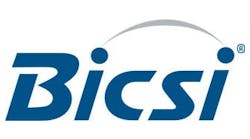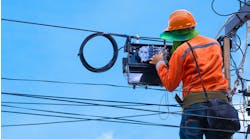5G REALITIES —
How has working toward 5G preparedness and deploying 5G impacted you and your team?
ACCOMPLISHMENT
What network-related project are you most proud of in your career?
COMMUNITIES AND COLLABORATION
Share the best way service providers and communities should collaborate to offer residents the high-speed broadband that is necessary to keep their communities vibrant.
InvisiLight® Solution for Deploying Fiber
April 2, 2022Go to Market Faster. Speed up Network Deployment
April 2, 2022Episode 10: Fiber Optic Closure Specs Explained…
April 1, 2022Food for Thought from Our 2022 ICT Visionaries
April 1, 2022CORE UPGRADES
Since rip-and-replace is not a workable strategy for transforming the legacy core network, what are the best strategies to upgrade the copper plant to deliver fiber-like speeds?
LAYOFFS
When telecom providers lay off employees that care for their wireline networks, what does that mean for both the wireline and wireless networks of the future?
NETWORK DENSIFICATION
5G will not be able to meet its performance goals without cell densification. In fact, hyper-densification is required to deliver the promise of 5G.
What work still needs to be done in this area?
NETWORK EVOLUTION PAINS
What is your biggest pain point across the wireline and wireless networks?
How can the industry help solve it?
NETWORK OPTIMIZATION
What are some best practices for optimizing the wireline and wireless telecom networks?
Eliminating flat VLANs. A flat VLAN is a network loop / broadcast storm just waiting to happen. When our FTTP network was in its infancy, we had flat VLANs running all over the network. However, we quickly learned how dangerous that can be, and now we eliminate them at all costs.
Keep detailed records. This sounds like a given but having good records is paramount for running a fully optimized network. Knowing what links carry what type of traffic and where those links terminate can mean the difference between calm, routine maintenance and a chaotic, major outage!
Mitigate the failure domain. Whenever possible we push routing and network intelligence as close to our customers as possible. This accomplishes several things including mitigating the failure domain. The thought process is that if we lose a router or an FTTP node near the network’s edge, we will minimize the impact to our customers and our staff as opposed to the outage occurring closer to the network’s core.
OTT AND INFRASTRUCTURE CHALLENGES
Over-the-top (OTT) service growth, fueled by streaming video and public demand for non-linear media consumption is a given. However, with this, further financial and infrastructure pressure will be placed on network operators.
What are some solutions to this problem?
TECHNICIAN FIBER TESTING
With fiber going deeper to prep the foundation for 5G, a shortage of qualified technicians who can efficiently install and test fiber is already being felt. The BT Group alone announced that nearly 3,000 new trainees will be recruited during 2019 to support its fiber deployments. Many of these new employees are completely new to fiber testing, coming from a copper or electrical background.
Is your organization facing something similar? What is your organization doing in this area to train technicians in fiber testing?
WORKFORCE CHANGES
Attracting and keeping top millennial talent is a burning issue for leaders. Millennials are 35% of the workforce. By 2020 they’ll be 46% of the working population.
What do we need to attract and keep young talent in the ICT industry?
YOUR TAKE
Share 1 problem/challenge that you are passionate about solving for the ICT Industry.















